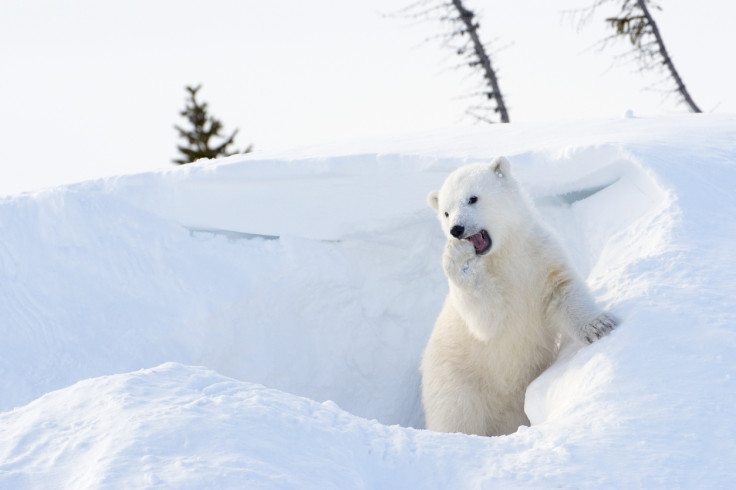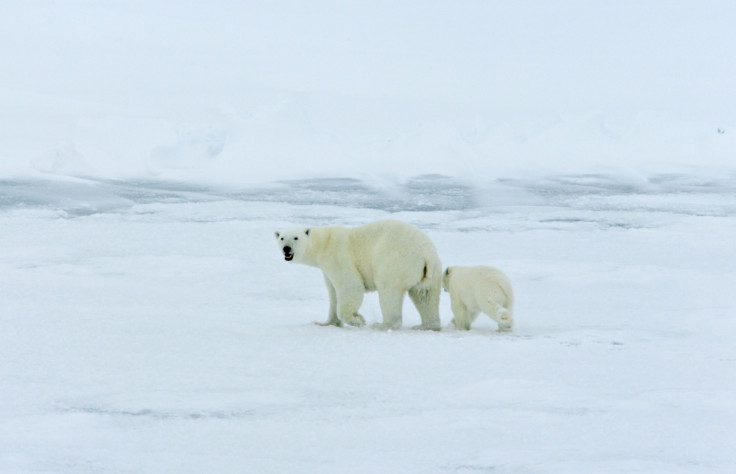Polar bear cubs are 1,000 times over the limit for toxic pollutants in the Arctic
Chemicals banned decades ago are still present in the Arctic, while levels of new toxic pollutants are rising.

Young polar bears are exposed to more than 1,000 times the estimated safe limit of a cocktail of toxic organic compounds in their mothers' breastmilk, a new study finds.
Environmental regulations that came into force decades ago are reducing some toxic Persistent Organic Pollutants (POPs) in the Arctic, but others are on the rise to take their place as regulations fail to keep pace with chemical manufacturers.
A study published in the journal Environmental Toxicology and Chemistry looked at 19 groups of chemicals at the top levels of the Arctic food chain: Arctic cod, ringed seals and polar bears.
While polar bear cubs are exposed to the highest levels of POPs, adult polar bears are also receiving more than 100 times more than the estimated safety threshold of POPs. Seals, on the other hand, are faring relatively well and are exposed to safety levels below this threshold.

What are POPs?
Persistent Organic Pollutants are chemicals that are toxic to humans and wildlife, which stick around in the environment for years. They include certain pesticides, insecticides and fire retardants.
They have a tendency to accumulate as they pass up the food chain, because animals don't have a way to get rid of them from their bodies. This is why baby polar bears, for example, are exposed to the highest levels of POPs in the Arctic, as their mothers' breastmilk has very high levels of the chemicals.
These substances can travel huge distances from where they were initially made or used. If certain pesticides are used at the equator, they can be easily transported for thousands of miles to end up at the poles.
POPs spread in air, water, through migratory birds and in waste products. They have a tendency to get concentrated in the Arctic and in Antarctica because of the typical distribution patterns through air and waterways, and because they last for longer at colder temperatures.
Many POPs have a chlorine-carbon bond that is very strong and hard to break down, which is key to their persistence in the environment. These chemicals are not easily broken down by sunlight, chemical processes or biological enzymes.
The exact level that causes toxic harm to animals such as polar bears is an estimate based on toxicity in humans, as toxicity tests to find the exact level in polar bears would not be practical or ethical.
"This work is the first attempt to quantify the overall risk of POPs for the Arctic ecosystem and to define a ranking in order to highlight the most dangerous chemicals in the mixture," said study author Sara Villa of the University of Milano Bicocca, Italy, in a statement.
"Even considering the very conservative approach used, the probability of toxicological risk for bears is high. In particular, because most POPs may have endocrine-disrupting effects, the growth and development of bear offspring may be endangered," the authors write in the paper.
Tightening the regulations
The story isn't all bad. The use of certain POPs started to be phased out as early as the 1970s, and international regulations introduced in the early 2000s at the Stockholm Convention seem to have made a difference to levels of POPs in the Arctic.
Some POPs that were widely used in the mid-20th-Century, known as legacy pollutants, were banned outright at the Stockholm Convention. POPs such as chlordanes, for example, have been steadily decreasing. In polar bear cubs chlordanes fell from 30 per cent of total POPs in 1985 to just over 10% in 2010.
However, newer POPs such as perfluorooctane sulfonate, which was only partially restricted at the convention, have been rising. In 1985 they made up about 25% of POPs present in polar bear cubs, and by 2010 they were more than 50% of POPs.
"The results demonstrate that international control measures are effective at reducing the risk to ecosystems," said Marco Vighi, also an author of the paper from the University of Milano Bicocca.
"Nevertheless it is fundamental to continuously implement the control of new and emerging contaminants."

This implementation is not always easy, environmental chemist Crispin Halsall of Lancaster University told IBTimes UK.
"The problem with the Stockholm Convention is that it's rather slow. It takes many years for a chemical to be nominated and a risk profile undertaken," said Halsall. "All the while, they're being produced, used, consumed and then they end up in the environment. We need to look at the procedure for chemicals to be included in the various annexes for the Stockholm Convention, and at improving the efficiency of the whole process."
The toxicity of POPs alone is a problem, but it needs to be considered in relation to other stresses that Arctic animals face, Halsall says.
"And the risk [posed by POPs] in the Arctic is exacerbated due to climate change. If you take some of these organisms like the polar bear, chemicals serve as an additional stressor on top of climate-change issues such as diminishing sea ice," he says.
"As scientists we need to be more holistic to look at chemicals as just one part of the stress system."

© Copyright IBTimes 2025. All rights reserved.






















